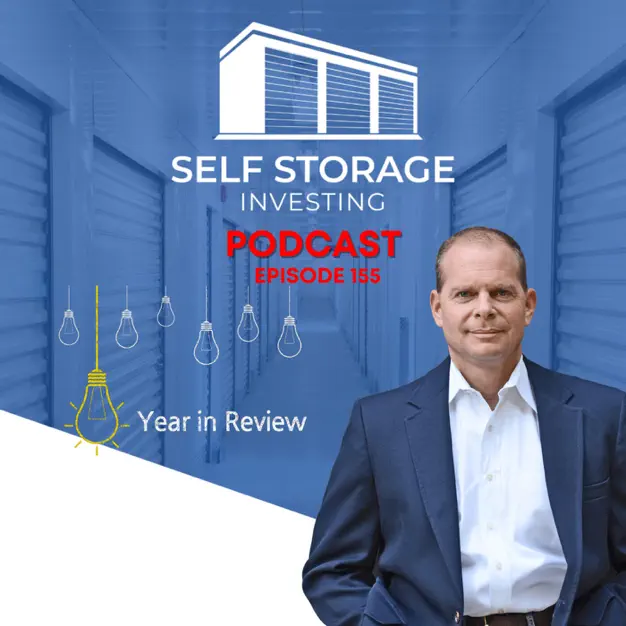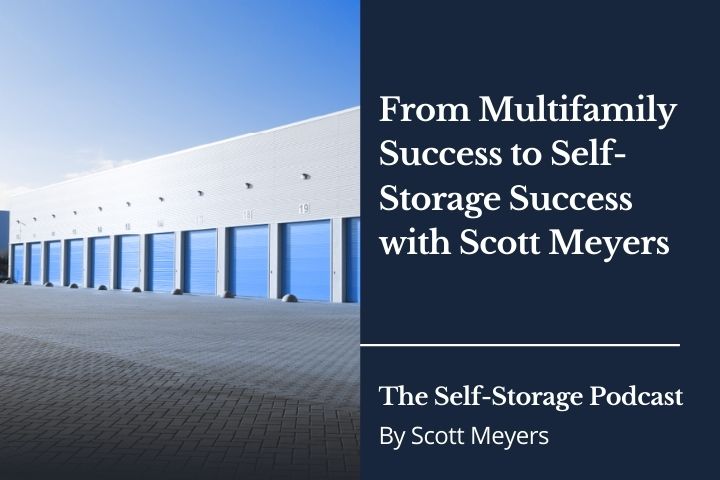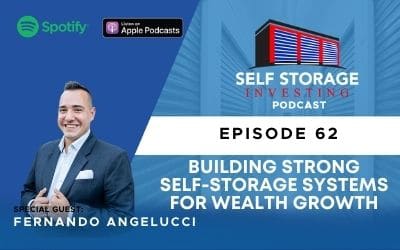In this episode, we look back at some of our most popular episode from 2023 and their pinnacle moments. These include discussions on the economic cycle, interest rates, and the importance of understanding the real estate microeconomics.
Some of our guests share their experiences transitioning from other careers into self-storage investing, emphasizing the importance of due diligence, trusting one’s gut, and the potential opportunities in the industry.
The episode also covers the importance of having a clear purpose and mission, implementing effective systems and processes, and measuring progress.
WHAT TO LISTEN FOR
2:27 Understanding the Real Estate Cycle
4:47 Identifying Signs of a Recession and Opportunities
10:37 Leveraging Opportunities in Different Phases
32:00 Adapting Investment Strategies to Current Market Conditions
Leave a positive rating for this podcast with one click
CONNECT WITH US
Website | You Tube | Facebook | X | LinkedIn | Instagram
Follow so you never miss a NEW episode! Leave us an honest rating and review on Apple or Spotify.
Episode Transcript
Announcer (00:07):
This is the Self Storage Podcast where we share the knowledge and skills from the industry’s leading investors, developers, and operators to help you launch and grow your self storage business. Your host, Scott Meyers, over the past 18 years has acquired, developed, converted and syndicated nearly 5 million square feet of south storage nationwide with the help of his incredible team at selfstorageinvesting.com, who has helped thousands of people achieve greatness in Self Storage
Doug, Producer (00:45):
Hi, storage Nation. I’m Doug, Scott’s podcast producer. In light of the holiday season, what we’re doing this week is looking back at some of the best moments of the episodes we’ve brought you throughout 2023. Early in the year, we were already battening down the hatches with recession clouds beginning to form. Carl Touhey and Jason Allen shared their thoughts on where interest rates were heading. Russ Sorrells provided some great ideas to avoid the accidental culture. Luke Wong told us to trust our guts and Ben Kall shared the audible he called when he shifted from football to investing. First up from episode 127 in May, Scott provided a two-part series already looking forward to a possible recession. And since then those clouds have only gotten darker.
Scott Meyers (01:32):
Where are we in the cycle right now in the economic cycle? What is different this time around every recession creates opportunities and looks a little bit different than the last. And so we’re going to talk about this one and where we are in the cycle and the 10 things to do if you want to survive and thrive. So yes, I’ve added a few bonus ones here as well. So let’s take a look at, if you will, the last recession, 1.4. Back in 2008, 2010, 1.4 million businesses closed. Thankfully mine wasn’t one of them. The National reit, N-A-R-E-I-T, tracks all equities and they track all real estate asset classes that are publicly traded. And the Nareit Equity Index lost at 40% in 2008 while the self-storage REITs themselves singled out, returned 5% during the great recession. Be honest, anybody that’s out there right now, if you’re willing, who didn’t lose money, those of you that were in business at that time, raise your hand or answer to yourself.
(02:27):
Did you lose money? If so, how did you lose money and why? And we’re going to come back to those questions. Just put a placeholder there in your own mind. So let’s talk about the real estate microeconomics and what’s at play in the four different phases of the real estate cycle. So we have generally regarded by economists, we have four phases, recovery, expansion, hyper supply, and a recession. So let’s cover those briefly just so that we can understand where we’re at in recovery. The characteristics are typically high unemployment, decreased consumption, decreased investment in buildings, land factories and machines. The price of land is low, interest rates are low. Vacancy rates well decreasing as rent is low and promoting growth, that’s typically what we see in yes, a recovery phase and an expansion phase. Unemployment drops, the price of land is rising due to lack of inventory.
(03:17):
Land speculation means that there’s a whole lot of investors who overpay for land relative to current market value. And during expansion, well the boom is on and there’s a whole lot of folks that are out there gunslingers that are out there making some crazy investments and in many cases overpaying for those as well. The next phase is hyper supply, and the first sign of trouble in a hyper supply economy is we see an increase in unsold inventory, and we’re starting to see some of that right now. Vacancy rates rise and rents begin to fall. And I would say that we are experiencing that in the self-storage sector right now. Wise developers stop introducing new inventory and there’s an asterisk beside that because that never happens. We just don’t see that at least in our industry. And that includes myself because in many cases, I mean if we are being realistic here and prudent, the yield in the marketplace right now typically still lies in development as long as you get the land without overpaying for the land.
(04:09):
And as long as our construction costs don’t go up dramatically and our capital stack and structures put together correctly, however, there still are some folks out there that have cash. There’s a new entrance into the self-storage sector that feel as if they can do no wrong and they have money that they’ve raised and they have to deploy it no matter what. And so that is typically what we see. So in terms of the first sign of trouble, that’s typically what we’re seeing. I would say that we’re in that phase right now. Second sign of a recession is there are indicators of trouble is when occupancy falls below the long-term averages. We’re there in some markets, but not all of them new construction stops or it slows drastically. We’re still a little ways off from that even with the high interest rate environment that we’re in right now.
(04:47):
Projects that were started during the hyper supply phase are finished and new projects are grounded. And again, I think this is just around the corner and the surplus of inventory leads to decrease in prices and occupancy and we haven’t seen that necessarily in prices, but occupancy certainly and revenues plummet. And again, we’re not there. So if I were to consult my crystal ball, which my crystal ball is broken or in the shop, can’t seem to find it, I would say that we are in that phase right now where we are straddling the line between hyper supply and heading into a recession. Third signs of a recession, third sign or third indicators of trouble is when interest rates increase. Well, we’ve seen that the Fed has to fight increased prices throughout the economy during hyper expansion mode. And so that’s what they do and that’s what they’ve been doing.
(05:30):
Occupancy drops rapidly, rents decrease, fixed costs increase, foreclosures follow, and then the value buying begins. Well, that’s the signs of a recession or that’s a sign of the cycle of a recession as well because I think that straddles also a number of months during the middle of recession. The factors to watch out for to understand where we’re at right now is to determine where we’re at and what to do is increases in unsold inventory. If there’s projects out there, and we’re seeing this across the board where there for the first time, I’d say beginning, say two months ago, this podcast is coming out in May. About two months ago, we began to see some properties that were listed within the brokerage community that are now seeing some decreases in prices, some days on market, a little bit long and actually price reductions. I think part of that is seller expectations.
(06:14):
There’s a little bit of a hangover from this bull run that we’ve had, and seller’s expectations typically lag behind the true market indicators in terms of interest rates and cap rates. So for that reason, I think there were some optimistic listing prices that were out in the marketplace feeling as if they were going to be trading at prices where we were back in 2021, vacancy rates rise and rents began to fall, rental rates began to fall. Yeah, I’d say we’re seeing that just a little bit occupies falling below the long-term averages, as we mentioned before, new construction stops increase in interest rates and then global unrest. Well, let’s add that then to the mix. Global unrest causes a lack of confidence in the investing community, a lack of confidence then reflected in stock market and many recessions and global unrest. And I would say that we definitely have been experiencing that in the past several years.
(07:01):
We have the threat of there’s ongoing wars internationally right now and the threat of other wars upcoming. And so as we see the world watch this, there’s a fair amount of uncertainty and fear. And anytime there’s fear in the economy in general, then there’s fear in the stock market. People begin to pull back, they begin to save their money, keep their money, their investments in cash, and a pullback from the stock market begins to create. It’s a snowball effect to create some more consumer unrest and lack of confidence. And we could be one war away, we could be one more significant event in terms of global unrest away from bringing everybody to the place where they’re pulling all their cash back home, taking it even from banks, as we’ve seen some banks failing recently as well. Not necessarily runs on the bank, but in the old fashioned days. But we’ve seen some runs on the banks and several that are in trouble right now.
Doug, Producer (07:49):
Next up from episode 1 29 also in May, Carl Touhey and Jason Allen
Carl Touhey (07:56):
And Scott, remember I’ll date myself a little bit. I remember going to the first self storage convention. We saw each other at Inside Cell Storage a week ago, and I remember I went to my first cell storage convention, the SSA at Caesars Palace, 1977. I was 17 years old and the entire self-storage association was 30 people in Caesars Palace with metal chairs. And the speaker was Buzz Victor for three days. Now I’m really dating myself. But then I remember Scott, that’s when in our Ford dealership prime rate was 18%. That’s where we almost lost everything moving fast forward, when I moved to Dallas in 1990, and again, the cap rate was 10, the interest rate was eight, that was the time where I made, I would say most of the money that I have now because I bought 300 apartment units in five storage facilities in two years.
(08:41):
It’s a lot for one guy and his wife working out of their house. Now, I’ll be honest with people and say in 2008, in 2010, Scott, I had a $10 million loan that got called that I was personally liable for, and it’s called Joint. And several, some of you people don’t know what that means. That means there’s seven partners. Each partner was joint and individually responsible. That means if something goes wrong, all of you are in the hook individually. And then the second one was an 8 million loan that got called in San Diego, not happy to say, but humbly to say that I almost went bankrupt twice 2008 to 2010 period. And moving forward, Jay and I, like I said, we own four self storage deals now, and I would say now we’ve learned about with the debt service coverage ratio, our loan to value on let’s say on our deals we’re probably maybe 40% loan to value.
(09:30):
And you were also forward thinking is, this is really where Jay was really pushing me. It’s like, Carl, listen, we got to put 10 year fixed rate non-recourse loan. So on our deal in Manteca, we have 3.6 10 year fixed rate non-recourse, that which we’ve got eight and a half years of runway left on that in Henderson, which is Las Vegas, we have 3.6 10 year fixed rate nonrecourse, the one in Moorpark, we have 4% interest only, but that one we’ve got three and a half years to go, but we’re cautious now of saving our cash and trying to run our properties. The opportunities are going to be for those of you out there, I’ll give you an example. I met a father and son team that bought a self storage facility in Houston just over a year ago. It was a $6 million deal, and they did one of the SBA loans, so that means they did 10% down, which is 600,000. They got a $5.4 million loan, which was partially guaranteed by the government via the SBA. That interest rate. Scott has gone from three and 5% to 7.5%. That’s going to be an opportunity for somewhere because that probably, let’s be honest, Scott Jane, I know this, it probably is worth less than the loan amount today.
Scott Meyers (10:37):
And not only that, but I think what we’re seeing, and maybe, and unfortunately for them, they probably didn’t see this coming as well. You just can’t build value that quick. Everybody needs to have a sense of urgency to build value in their facility every day, regardless of whether we’re heading into a downturn or not. But that is just plain getting caught out by the market. You can’t make up that much, create that much value and generate that much revenue and drive your expenses down that much to cover for that. That’s what we’re seeing all across the country right now.
Carl Touhey (11:00):
And then the second opportunity, which I see is going to be out there, Scott, is the guy who bought land, paid a little bit too much for it, remember this is three years ago, and then he built it, probably went over budget. And now his rate, which is a lot of the construction loans the guy’s got, number one, they’re a full personal guarantee. His rate has gone from three and a half. When I met him last, it was seven and a quarter. I bet it’s eight and a half today. And what’s going to happen to those guys where it’s going to be an opportunity is that he’s going to fill up, get to his 80, 90% occupancy, and all of a sudden the lender’s going to call him up and go, Hey, you’re not taking in enough money to hit a 1.25 debt service coverage ratio. And that’s when the world’s going to change.
Scott Meyers (11:39):
Yeah, I mean those that maybe weren’t as savvy heading into it, let alone the folks that were doing it right are just getting caught both in terms of the timing of the market factors change sometimes to the fault of maybe some folks maybe being naive. And then other times, as a matter of the change in the economy and the rapid runup in interest rates, and that is what is different in this recession versus others, is how quickly the interest rates jumped and then add onto that supply chain issues. And we know time is money and the increase in construction costs for the development projects of all, that’s been a triple whammy for those as well. So absolutely all of this does spill opportunity for us. And again, nobody likes to see a pandemic or a recession, but we know for those of us that are in a position to be able to come alongside, help assist, do joint ventures, there are going to be opportunities out there. So Jason, give us your take. What are you seeing as you look down the horizon?
Jason Allen (12:24):
Sure. Well, to look down the horizon, I think you always got to look towards the past a bit because the past kind of tells the story of where we’re going to head a year ago. I mean, on the brokerage side, we were quoting deals at a four, four and a half, maybe a 5% cap rate when you could go out and get three and a half percent debt. And boy has the world changed and it’s changed insanely, insanely quick. So today we’re getting debt quotes, five and half, stick to six and a half, pushing 7%. That’s a massive change just over a year. And so as Carl mentioned on the horizon, what we’re going to see is a lot of groups who had, let’s say, bought based on specialization a few years ago, they put short-term debt. Street rates have now leveled off, if not have started to go down in some markets, cap rates are not compressing, they’re going the other way.
(13:11):
They’re heading up, it’s the perfect storm, and now you’ve got debt coming due. Now what you will see, as Carl had mentioned, is debt coverage ratios are going to be flipped upside down, which if you’re in a big partnership means capital calls. Well, who’s going to want to pony up cash to own the same deal that they’ve owned that has been cash flowing? And they’re going to say, well, what’s going on here? And we are in an uncontrollable situation solely driven by the increase of interest rates and also a change in shift in market. So on the horizon, I foresee, not now, but probably six to 12 months, a lot of storage properties, hitting the streets, hitting the market, people trying to exit, potential partnerships, disputes, there’s going to be some pain and pain spells opportunity.
Doug, Producer (13:55):
Next up from episode 133, Russ Sorrells
Scott Meyers (14:00):
Let’s go back to I guess the aha moment when you recognize that we need to dismantle this and put it back together the right way and begin building those building blocks for the business that you have right now. What did that look like during that phase?
Russ Sorrells (14:13):
Yeah, it looked like desperation because when you’re in it, it’s very difficult to see any light at the end of the tunnel. And I had a business partner that was in this with me, and he was often saying, well, how hard can this be? And so my first job was to convince him that we needed to figure something out and either pay up or exit or identify what our strategy is going to be, because we kept putting money in at this point, instead of cash flowing $40,000, it was $10,000 upside down each month. So we had to continue to put money in. So certainly I created a whole list of things not to do. Again, number one on the list, Scott, was you cannot rationalize with irrational people. And that sounds obvious, but in that world. So my first business, well, my first business was a machine shop in my garage years ago.
(15:13):
And then I built a manufacturer’s rep business where I sold automation. And my primary customer base were engineers. I worked with professionals, I worked with presidents of companies and general managers of companies, and I work with engineers to help them identify these multimillion dollar automation systems that they were going to buy and then eventually build product to primarily automotive. So they would ship these to automotive companies. So I was used to having a more professional interaction, and when going into that consumer space was an absolute punch in the face because consumers, as it turns out, aren’t real rational. The help that I had to bring on to be able to be in that role to work at a car wash, they were not very rational. And I really struggled to relate and connect when you haven’t lived paycheck to paycheck and you don’t know what that’s like.
(16:18):
And so I would sit down with my team members and I would say, Hey, let’s create a plan for your life. Oh, can you hear me okay? Okay. Yeah. So I said, let’s create a plan for your life. And so we would sit down and I would go through, I sat down with every single team member and I helped them create a plan for their life. And I’d say, what do you want to do? What do you want to accomplish? Well, I want to get my GED. Awesome. We will help you pay for that. Here’s what I want you to do. I want you to go make a plan. What’s step one? I said, let’s just start right now. What’s step one? Well, step one is I need to get enrolled in this program. Okay, excellent. So that’s step one. What’s step two? Step two is that I’ve got to pay the fees.
(17:03):
Okay, we’ll help you with that. What’s step three? So we worked to create a plan. Literally every time I would work with them to create a plan, they would quit like, oh my goodness, I want to help you. I want to help transform their lives. But I don’t know if they were afraid to take that step or what was holding them back. But one story, I had someone actually break into my facility after I had ’em up and met with them, they broke into my facility. So that was an interesting experience as well. So we actually didn’t know, it’s kind of a funny story. So had the young man up talked through, he had just gotten out of jail. And so I was talking through, what do you want? He said, well, I’m a dad now. I want to be a good father to my son and be a good boyfriend to my girlfriend who has my son.
(18:03):
And so saying all the right things, and I’m like, oh yeah, okay, excellent. So do this, do that. And so we made a plan and later on that night, the facility was broken into, and I’d had him upstairs where all of our stuff is, and obviously he had seen this, but we didn’t know who it was. We couldn’t identify who had broken in. We had cameras. But those cameras, they’re not super good to be able to figure out who somebody is. And so this was a mystery, but we knew it was an inside job, we just didn’t know who it was. And the parole officer calls up to the shop and says, Hey, was there any reason that Jamarion would’ve been at your facility at one 30 in the morning on such and such date? I’m like, well, as a matter of fact, there isn’t.
(18:57):
But I know that he was here, in fact, because of what happened. So he had an ankle bracelet on and came and broke in. So it was a bit disheartening. I want to help people. My goal is to help people live their full potential. But that’s a long answer to ultimately we realized that the best strategy for us was to exit that business and to move on to something that we would be more effective at managing and that we wanted to do. We got into it for the wrong reason. At the end of the day, we got into it because we just wanted to make money, and that was, that’s the wrong strategy as I’ve come to.
Scott Meyers (19:46):
So that’s a good point for Storage Nation here to hear rus. And that is when you look around the landscape and the asset classes, sell, storage is always at the top. It’s recession resistant, it’s inflation resistant, it outperforms all the other real estate asset classes. And so we got a lot of folks in other asset classes in real estate coming into self storage. And we also have gained a lot of attention from family offices, private hedge funds, other REITs are adding self storage. They’re just gobbling these facilities up. And so all eyeballs around self storage right now, it is the darling of commercial real estate. But these folks have every opportunity to do this before, but they never did because it wasn’t a passion of theirs. They didn’t have any interest in it. And so they’re looking into it because of the performance and they’re looking into it because it makes money.
(20:33):
And so not always the right reason to get into a business. So that’s what you do is you help people to understand, first of all, why are they in the business that they’re in? And then once they get into it and they begin to grow it and scale, how do they do so and either keep the passion alive, or if they truly are, they got into it for the wrong reasons, how do they then begin to manage it so it doesn’t spiral a out of control because perhaps they’re the wrong person in the wrong seat driving that bus. Tell me a little bit about the self-awareness. I guess if we could boil that down and those conversations you have with the leaders of the organization and what they need to do and how you equip them to lead.
Russ Sorrells (21:11):
Yeah, we create, so we focus on four areas. We really obsess over four areas. The first is people because that is what makes our business is the human capital that executes on a day-to-day basis. So getting the people right, understanding the talent, having the right people in the right seats, as you mentioned, is our number one job as leaders. Second thing we want to focus on is that purpose. We want to have a very clear purpose and mission. Why are we doing this work? Because if we aren’t passionate about it, we aren’t motivated and energized, then it’s going to be really difficult to get our team excited, motivated, and energized to come in and execute on a day-to-day basis. So we need to get really clear on why we are doing the work that we do, that we do. So Simon Sinek has the why.
(22:00):
It starts with why. And so we get the why, right? That mission, that focus, that purpose, that intentionality, then we’re going to be able to stay in it. We’ll stick with it. We’ll do what we need to do to be successful because the why is going to drive us. And then the third thing that we want to focus on is our playbooks. We want to make sure that we’ve got systems and processes to help us execute and deliver consistently to our customers. We want to deliver value to our customers. If we’re doing syndications, as we might here in self-storage, we want to make sure that we’re delivering the value to those that have entrusted us with their capital. So we’ve got that responsibility. We’re kind of the meat in the sandwich sometimes because we’ve got customers that are renting from us that we need to make sure that they have a great experience.
(22:46):
But the way that we do that is by having playbooks so that we can consistently execute. And then bringing in part of playbooks is bringing in the right partners. If you buy a facility and you do not want to actually manage the facility, well, there are companies out there that will do that for you as long as the values that they have are aligned and you’ve got alignment, then by all means leveraged. Leveraged the talent that’s out there to help you with that. And the fourth part, the fourth component to our four Ps if you will, is performance. This is where the majority of companies that I work with Slack, they aren’t measuring their progress. So what I find is we have a world full of doers. We love to go do, Scott, we don’t like to plan necessarily. We prefer to just go do it, just give it to me. I’ll go make it happen. And as a result, we don’t measure our, so we don’t have what we call kept promise indicators, KPIs. So we don’t have our KPIs on the regular that we evaluate to confirm that our work is actually progressing us toward our objectives and our goals.
Doug, Producer (24:04):
Next up from episode 143 with Luke Wong. Sometimes you just got to trust your gut.
Luke Wong (24:11):
You have a good feeling when you’re talking to somebody or when you’re working with somebody. I think that your gut has a lot to do with that because even passively, when I was investing, I was trying to vet the jockey more than the horse because a good operator can turn a bad facility around, but they can also take a good facility and just make it really bad. And I know I’ve heard those stories too, and partnerships going bad and things happening and small JVs that I have done, I haven’t always worked out. And I think that’s always a risk, but then there’s always risk of you staying still. I don’t think I would’ve able to grow that quickly, that fast. I would’ve grew probably at a different level, but it’s just now brought me more out of my comfort zone to go after bigger and better things.
(25:04):
And I’ve learned a lot. We’ve both learned a lot from each other, and we continue to grow. We just came back from a weekend event that he had some of his operators come. We flew in and spent some time with him and some of the partners at his house in Minnesota. And yeah, it’s a great network of people even though I’m just directly involved with the five facilities, but I mean over a hundred, maybe 25 facilities, we all connected one way another and we all helped each other out. And with the right partner, you can go far and with anything, things can go bad. But then again, if you wait and just always play it safe every time, even though that’s not safe, I mean even if I wasn’t by myself, something could happen. I could have made a big mistake and then things could have went a different way. So you just really never know. And I’m willing to be out of comfort. That means that I’m growing. And I think anybody needs, whether it be business or life itself or personal, I don’t think you can really do anything by yourself because either you’ve got a spouse or a partner and they’re helping you raise the kids or go through life together. So if you’re really doing it solo, you’re limited. I would agree. For all
Scott Meyers (26:39):
Those reasons. You don’t know what you don’t know, you don’t know your blind spots. And when you pull resources together, that makes life so much easier in terms of sometimes lack of competition, if there’s several people that decide to partner together versus fighting over deals in a marketplace, but also combining your net worth balance sheets and your bankability when it comes to lending and borrowing, that just makes life a lot easier if you have more resources to be able to take down more deals. And as this saying goes, and as you’ve heard me say several times from the front of the room at our mastermind, a hundred percent of nothing is nothing. And so put your pride aside, your fears aside, and all the stories that you’ve heard from other, the naysayers who never got up to bat or took a swing and as you mentioned, never did anything.
(27:23):
Sitting still is just not an option. It’s certainly not utilizing your best resources, which is your ability to move forward. So to do so, but to do so with a proper due diligence and just making sure that there’s a fit is certainly a better way to go. So look, when looking at, I don’t even want to say advice for people that are looking at partners, but from your experience and what you’ve seen, what makes a good partner or what is the proper due diligence that one should seek when they’re looking at getting on equal footing with somebody that’s going to be at the same level making decisions together on a project?
Luke Wong (28:01):
Active partners that I have now, but even the passive ones, I’ve watched them from afar from a while before I made any decisions to actually do something. But when I was ready, I just called them up and say, Hey, you may not know who I am, but I’ve been following and I’m ready to work together. So not just looking at just the business, but how they treat other people in their personal life or how they do take time with the family and just hearing from other peers, just really observing what they’re doing, how they’re doing it, how long they’ve been doing it. Do you agree with the way things are being run or how they carry themselves or the core values are. And then again, I think a lot of assets do trust your gut. Sometimes everything’s going right on paper and you think your gut’s telling you just something right here, and that’s usually a good sign to back up and take a look. So I’ve covered acrossed that situation too, where everything looks fine on paper, but then something will feel right, and usually I’m glad that we didn’t step forward. So I would say trust your cut, but do your due diligence in all areas, not just their business, but then who they are because that carries over. It’s all connected.
Scott Meyers (29:32):
I would agree. One of my friends says that if they’re getting ready to do business with someone, if it’s at all feasible, if they’re close to the same city, if they’re flying in, if it’s a big deal, they invite ’em over. And if their dog barks at ’em or growls, then they’re out. They’re not going to do business with them. So there’s another litmus test for you. But it is interesting, Luke, you do need to see how people act not only in business but elsewhere. So if you begin to follow ’em around on social media and try to get a sense for who they are and what they believe in and what their values are, that’s very important. But I found it interesting many, many years ago at one of our self storage academies and a gentleman that came up to me on the third day and he said, Hey, this has been a great event.
(30:14):
He said, but I don’t think I’m going to move forward and actively invest in self storage. And I said, yeah, well, why not? He said, well, that’s really not what I came here for. He said, I came here because I wanted to invest passively in one of your syndications, and I just wanted to come and meet you and your team to see if you were the real deal. And if the Scott Myers that showed up on social media and elsewhere on the internet, it’s the same Scott Myers in person. So I came here to basically watch you, and hopefully I’m not creeping you out, but I watched you interact with your staff on stage, off stage, behind the scenes. I watched how you interacted with the hotel staff and other people that maybe some people would think are below them. And certainly I won. He ultimately ended up investing in with this passively, but I wouldn’t expect some people to do that amount of due diligence.
(31:03):
But you kind of have to. And I can look back and certainly there are times when I’ve entered into partnerships or joint ventures and I hadn’t done enough due diligence to find out that perhaps those folks didn’t treat the hotel staff very well and they weren’t going to treat me very well, or that there was just a little chink in their armor and the level of integrity that I thought they possessed maybe was a little less than my expectation. And so you really can’t do enough because partnerships, depending on what level, if you’re on equal footing your general partner’s in a deal, it is kind of like a marriage. You’re spending a lot of time together making decisions together that have big consequences, good or bad. And so it’s always good to know the person you’re getting into business with. And even some limited partners, there’s some folks that we wish we wouldn’t have taken on, even though they’re limited partners and they don’t essentially have a say in things, they can certainly make your life miserable if they just decide to create a ruckus. So it is important to vet people.
Luke Wong (31:57):
Oh, yeah, absolutely.
Scott Meyers (32:00):
Luke is the time that we’re heading into right now, depending on who you talk to and where you view the economy and the industry and self storage right now with interest rates where they are maybe staying static through 2024, maybe going up another quarter a point, but heading into an election year, maybe coming down and beginning that turn, how are you approaching the market? Has this changed your approach or how are you viewing 2024 in terms of opportunistic or are you kind of sitting back and just kind of waiting to see?
Luke Wong (32:31):
Well, it’s a little bit of both. I think it’s opportunistic and sitting back, I’m not aggressively looking for deals, but I’m keeping my air open and I’m talking to people because whether the time is now or later, you got to plant that seed because the first facility I got with that yellow letter, six months from the first contact to close it, and most of it was just relationship. I didn’t have any bank to do. It was just making heartfield comfort. And I think that’s the same thing now. I mean, there’s still deals out there and probably a little bit harder to come and harder for the banks are making a little bit more stricter and the numbers are a little bit tougher to make it work with those rates. Then you look at the seller finance possibility because there’s always people that situations are changing. So right now, for several few months, if not a year, just really focusing on tightening the existing operations and maximizing those. So when the opportunity does come, I’m not having a heavy lift to keep any renovations going. Got the systems and processes a lot smoother, where now you can spend more time on the acquisition part.
Doug, Producer (33:53):
And lastly, from episode one 50, former football star turned investor, Ben call
Ben Kall (34:00):
A little bit about my story. I used to be a college football coach at Kansas State University. That lifestyle for everyone who’s not embedded in college sports, it’s a pretty grueling career. You’re consistently working close to 80 to a hundred hours a week, 24 7 the entire year. And so after getting married, my wife and I essentially realized that that was not the life that we had envisioned. It was a dream that I was living out as a former college athlete being around sports. My wife was an athlete as well. But as you get married, things change. So we needed to take a life pivot. And we ended up moving back to my hometown of Rochester, Minnesota, and I became a real estate agent. And then originally it was going to be a holdover job until I found something in sports again. But kind of being a competitive athlete, that nature came out in me and I hit the ground running as a real estate agent saying yes to every opportunity that I had.
(34:57):
And so fast forward a year after becoming licensed, I was selling houses, I was listing houses, I was doing commercial leasing, commercial sales. I had started a property management company. And so now fast forward two years, I have a property management company and a brokerage business that is going fairly well. And I started working with investors to sell single family houses. So now I’m selling people houses, I’m managing their rentals. And over time, I started to build a little track record. So that portion of my company was growing. And in 2018, one of the owners of the largest portfolio that I had managed in my property management division of my company called me and said, Ben, you’ve made me a lot of the money over the last couple of years, and I just got presented a bigger opportunity than I can do on my own.
(35:52):
And you are an operator that does a fantastic job. It’s a self storage deal that I know absolutely nothing about. And I’m aware you don’t do storage, but I have confidence in you. Would you partner with it, partner on it with me? If it’s something you’re interested, we should do it. The numbers look great. And not investing in anything yet, or even thinking that I was going to become an investor. I basically looked at my wife and said, Hey, we’ve been starting to listen to podcasts a little bit. I’ve been reading some books. It seems like the whole Rich Dad, poor dad, Robert Kiyosaki is a, that might be a good idea for the rest of our life to not have all our eggs in a basket and be a commission-based agent. So I just said, yeah, completely blind. And about 30 to 40 days after going under contract on this storage deal that neither myself or my partner or anything about, we closed and we were completely blind in it.
(36:49):
I brought the hustle, I brought some money to the table. And the hard part in the industry back when I got started in 2018 is there weren’t podcasts like this. There weren’t many books written about self-storage. So the only thing I was able to do was drive around with some of the other facilities in my market and ask for advice. And back then, the old school approach is not to give advice to hide all of your information and not share trade secrets. And so what I did is I leaned onto some buddies who owned and operated hotels, and I decided I should operate a storage facility just like a hotel. So a lot of that was bringing my rentals online, and I had this whole concept of bringing a concierge service to self storage. So now knowing and listening to everything else in the industry and having about 400,000 square feet or close to 3000 units, this is nothing new.
(37:49):
It’s not rocket science, it’s something that’s been going on. But at the time, I was doing anything to provide customer superior service to customers. And that was my first inkling of it. And eventually after a couple quarters, we started paying distributions and I was getting cashflow for myself as a real life investor. And so after doing my very first investment ever and being a larger commercial property in a self storage niche, I was hooked. And so that was in 2018. Fast forward today, which is 2023, the bulk of my portfolio is self storage, but the other 50% is split between multifamily and triple net real estate across the Midwest. I still have a third party management division. I still have a brokerage team at Max Results. And the newer company that I founded in the last couple of years is called Legacy Investment Group. And essentially this started just because of word of mouth and people in my local market watching me and continuing to ask to invest with me.
(38:56):
So the Legacy Investment Group is essentially a private equity or syndication company where we bring in silent partners to help raise capital to go buy some bigger deals. And so as you alluded to in the intro, the biggest deal to date was an $18 million storage portfolio in Northern Minnesota. And we’ve closed on that and we’ve been implementing our transition onto all of our systems, our locks, our gates, our software for the last two months. And transitioning something of that size is definitely a whirlwind, even though that I thought we had all of our team and systems in place, there’s always something new to learn or implement in every situation that you get yourself into as an investor.
Scott Meyers (39:39):
We come from similar backgrounds in terms of coming into self storage a little bit afterwards, after being involved in a multifamily and single-family, their asset classes. And I came into it the same way that you did, which is there wasn’t a whole lot out there. There wasn’t many people teaching it and didn’t know a whole lot about it. So I was asking the people that were in it. And fortunately this industry, we find that people are willing to share, they’re willing to share a lot of information about the industry themselves without divulging their competitive advantage. And now that was the difference between single family and multifamily. But aside from that, that’s why we started our education company, and that’s why we started our podcast because we recognized there was a hole in the marketplace where there wasn’t a lot of information out there. And trade shows are great, and the associations are good, but that’s really, there’s only so much you can learn about the building side of it and the operations side of it still, but the nuts and bolts of investing, that’s a whole different ball of wax.
(40:38):
It’s a whole different skillset that is involved on that end as well. So I’m glad that you went in and the numbers did look great and you discerned enough, you and your partner that it was great, because many times when people do that without getting educated, sometimes it doesn’t turn out very well. But a couple of things that I wanted to tack onto. So legacy is how I came to find you. But then knowing that you’re involved in other asset classes, and some of those are by way of what you were managing in the past, but you’re still into triple net commercial, you’re looking at multifamily and also in self storage. And so here we are, we’re heading into what would some would say either we’re in it or heading into another economic cycle. So you’ve got three asset classes that you’re investing in and managing for. How are you approaching the market with those three? Are you shifting away from one or two versus another one or doubling down in two versus three? Tell me of the three asset classes that you’re in right now, how are you positioning for the future? And for 2024,
Ben Kall (41:40):
That’s something that I get asked a lot about. If I’m talking to an investor about a particular deal that we’re working on, they say, oh, is storage your favorite? Is multifamily your favorite? What gets you the most excited? And to be honest, that’s a really hard one for me to answer. I was a property manager first. I was negotiating with Chipotle corporate before I ever owned anything in self-storage or multifamily. So I’ve had a lot of experience as an operator and property manager in all three asset types. So to be completely honest, I feel very comfortable in each of them As an investor, putting my investor hat on, I’ve been in self storage and multifamily the longest. Triple net was something that I saw about two years ago where there was an opportunity in the space during covid. There was a lot of scare amongst a lot of investors in retail, and I’d been managing it for quite a while.
(42:35):
So I knew a lot of the specific things to look at from a location, a traffic count, a speed limit, a lot of those checklist items corporate tenants are looking at. And I saw a major drought in construction of retail. And so I knew that there were certain service-based businesses where a human actually has to go to get physical therapy, their nails done, haircuts, chiropractic space, even some plumbing companies that have supplies, right? So I saw a massive supply problem in very good located retail, and I saw a lot of investors backing out. I saw a lot of sellers leaving this space. And so I saw opportunity to try to go pick up some retail centers at an eight cap valuation at the time where self storage and multifamily was trading at a six cap. So from a pure return perspective, simple math says your returns are going to be significantly better.
(43:37):
Now, today, I have learned that you need to be extremely cautious and the roller coaster of high valuations and cash flows to cratering overnight with tenants leaving in triple net, it’s a lot different than self storage. And in the triple net space, you can have one tenant leave opposed to in self storage, you can have a hundred tenants leave to get the same magnitude of valuation shifts. So you just need to pay attention to things much differently. But if you have a well positioned and located retail center, you can do very, very well today. And I still believe that.
Announcer (44:18):
Hey, gang, wait three things before you leave. First, don’t forget to follow the Self Storage Podcast and turn on your notification so you never miss another episode. And while you’re there, please leave us a five star review if you like the show. Second, be sure to share your favorite episodes and more via Instagram, and don’t forget to tag us. And lastly, head to the links in the show description and hit follow on Twitter and Facebook to get a front row seat as we grow and scale our business and bring you along with us.
















